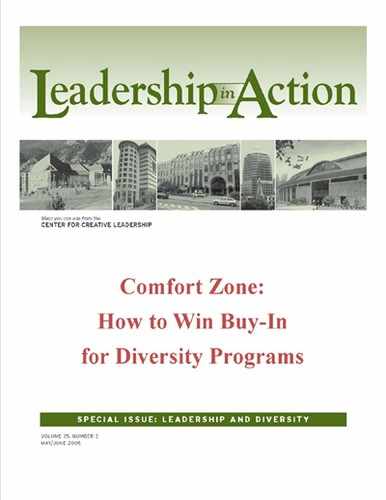SETTING AN EXAMPLE
If diversity is a given and can be a positive attribute for organizations, what can leaders do to help their organizations deal with it appropriately?
The first thing leaders should do is start close to home—with them-selves. Leaders must be the first to address the issue of diversity because it's their job to set examples and standards. Employees look to leaders to help make their work and community lives better. Leaders cannot be good role models for understanding and embracing diversity when they them-selves are uncomfortable with it or have blind spots.
Two cities, Rochester, New York, and Greensboro, North Carolina, have launched a program designed to break down racial misunderstandings in their communities and build trust among members of different races, achievements that can reduce discomfort with diversity initiatives. (In Rochester the program is called Biracial Partnerships for Community Progress; in Greensboro it is called the Mosaic Partnerships Program.) The program starts with government, business, and community leaders, because of their circles of influence and ability to set examples.
“The opinions and actions of leaders have a great influence on the rest of the organization or community,” says Bob Rosenfeld, CEO of Idea Connections, the Rochester consulting firm hired by the two cities to run the program. “When a sufficient number of people are influenced by this group, a shift in common values occurs and cultural transformation begins.”
Leaders trying to frame their thinking on diversity may find CCL's leadership development model of assessment, challenge, and support to be helpful. Diversity initiatives are filled with many significant challenges, including misperceptions, assumptions, and individuals' and society's histories and sensitivities. A high level of challenge makes accurate assessment extremely important and necessitates a high level of support. Assessment can be tricky—there may be heightened sensitivity to being judged or criticized, bias that can affect feedback, or awkward dynamics in giving feedback when the parties are different from one another and uncomfortable with that difference. The following suggestions can help leaders improve assessment and increase support.
